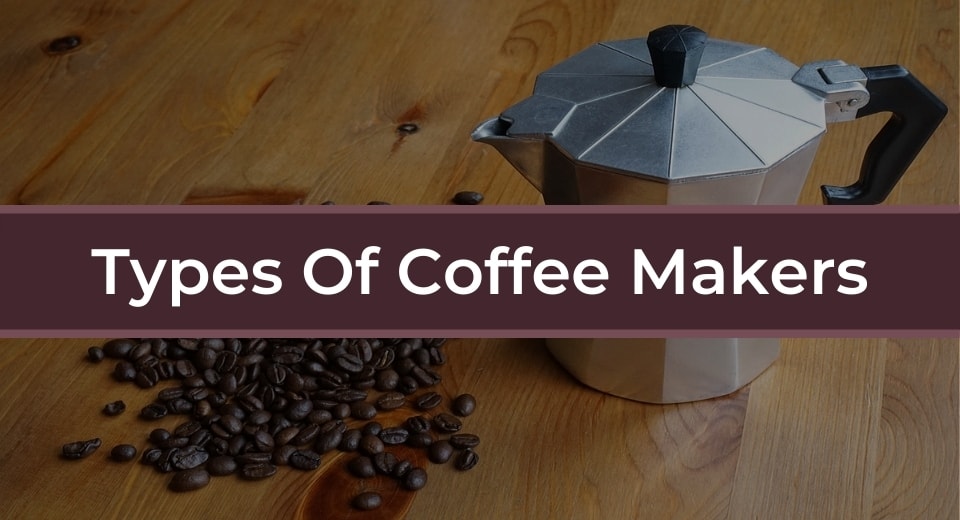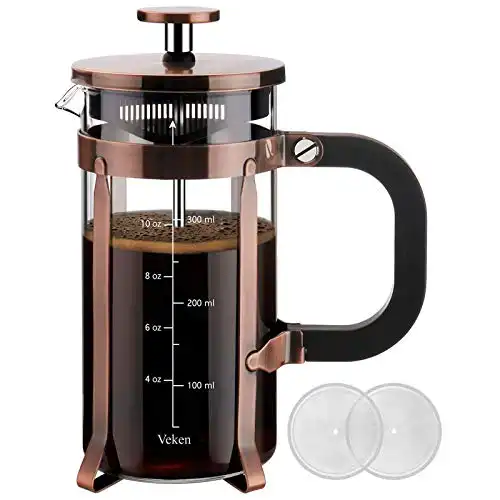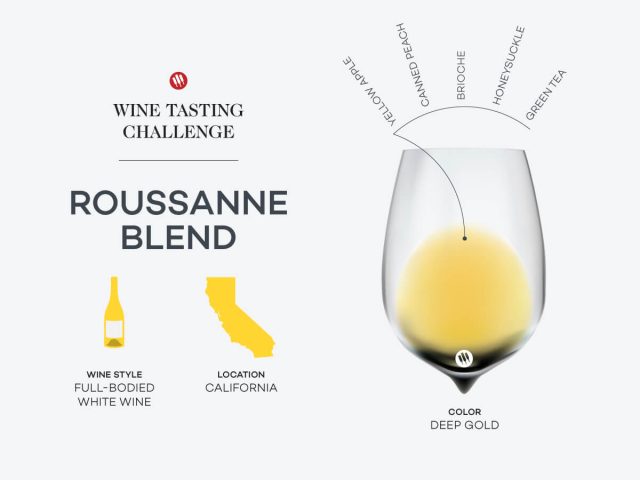8 Popular Different Types Of Coffee Makers And How They Work

Coffee is composed of a plethora of details. What type do you like to drink? What’s your favorite roast level or origin?
Brewing methods are another detail on the pile. They can seem superfluous to the beginner, but they’re a very important part of the process. Not only can they slot differently into your unique schedule, but they can also affect the flavor, aroma, and mouthfeel of your coffee.
What kind of coffee brewing method will suit you best? Below is a comprehensive list of the different types of coffee makers — separated by lifestyle and ease of use – you’ll be trying out as you step into the wide world of coffee.
8 Different Types of Coffee Makers
- The Keurig: A Quick Cup Of Joe
- The Drip Coffee Maker: Even More Classic
- The Pourover: Simple And Straightforward
- The French Press: Classy Without The Fuss
- The Aeropress: Delicious Coffee On-The-Go
- The Moka Pot: Fine Espresso For The Slow Days
- The Espresso Machine: A Beautiful Set-Up For The Ultimate Aficionado
- Additional Coffee Accessories To Round Things Out
1. The Keurig: A Quick Cup Of Joe

This is the quintessential coffee brewing method for busy Americans and stay-at-home parents. You just pour in the water, slot in the k-cup, and press a button.
The home coffee maker takes on a few different forms depending on just how devoted you are to convenience. I used the single-serve K-Classic Keurig last year while I was waiting for my brewing tools to come in and, while I wasn’t blown away by grocery store coffee pods, I nonetheless found it slotting into my morning schedule.
It certainly had the kitchen smelling nice and clean-up was a breeze. The lack of fuss when turning on the machine is only matched by the lack of fuss when it comes to cleaning.
That said…if you’re trying to become more eco-friendly with your eating and drinking habits, Keurig and any imitators should be approached with caution. There has been controversy concerning its coffee pods and their ability to be properly recycled in today’s overflowing landfills.
This can be avoided by purchasing a reusable coffee pod, which also gives you the option to grind up your own coffee or purchase pre-ground bags. The former option would require a coffee grinder, however, so budget wisely!
Summary: the Keurig is a fast and affordable choice that will save you on clean-up time compared to more complex, traditional coffee brewing methods. If you’re trying to go green or want more subtlety in your coffee, however, you might want to steer clear. You can find Keurig products on their site here.
2. The Drip Coffee Maker: Even More Classic
While Keurig has dominated the market by narrowing down already simple steps, many still prefer the quintessential drip coffee maker.
The iconic Mr. Coffee is a coffee brewing tool I used back in the day before I fell in love with more manual methods. There was just something so relaxing about setting in the paper filter and scooping out grounds.
This coffee brewing method has just enough steps to feel hands-on but is still convenient enough to require little effort. Since you’re not limited to the scope provided by Keurigs, you also get to choose which roast level or origin you want.
Again, get a decent coffee grinder on hand to keep your options varied, or request ground versions from your local roaster.
Similar to the pour-over (which we’ll look at below), the drip coffee maker relies on a medium-fine grind. You don’t want the beans looking like flour, but you also don’t want them so coarse they resemble wood shavings.
Clean-up involves a simple wipe-down of the filter basket and disposing of the coffee grounds. Your coffee will also stay warm on the heating pad until you’re ready to drink.
While I praise pour-overs and French Presses, I have to take extra care to make sure they don’t cool prematurely.
Summary: the drip coffee maker is a staple of countless American homes. While involving a few more steps than the Keurig, it’s still incredibly easy to use and clean. You can find Mr. Coffee at their site here, while Amazon has a nice variety of options.
3. The Pour-over: Simple And Straightforward
A step up from the home coffee maker, the pour-over is an elegantly simple creation that broadens your coffee depth exponentially.
The best thing about it is just how simple it is to use. The pour-over has two parts — the cone and the cup — that you combine with a specialized filter.
While you can technically use any standard coffee filter, pour-over cone filters are designed to facilitate the most consistent pulling of the water through the grounds. You’ll want to use a medium grind (not too coarse, not too fine) for this one. Even how you pour the water can affect how good your coffee tastes.
Here’s a hint: use a circular motion and make sure the water isn’t boiling hot, as it burns your beans and increases bitterness.
Similar to the coffee maker, clean-up is a breeze and adds to the appeal. Just bag up your grounds, toss them into the trash and rinse out your glass (or ceramic) parts. In my experience, pour-over coffee often boasts smooth and silky mouthfeels, with a tendency toward more savory and sweet flavors.
If you’re working on living an eco-friendly lifestyle, it helps knowing coffee grounds and paper can easily be recycled or repurposed.
Summary: the pour-over is a little more hands-on than the coffee maker, but is still simple enough to guarantee a quick clean-up afterward. It’s also a superior green option compared to the Keurig and you can even use your bagged-up leftover grounds as an air freshener for your trash!
4. The French Press: Classy Without The Fuss
Is it possible to get a similar result to the pour-over while still not adding too many fussy steps? Enter the French Press (sometimes called the coffee press), the stylish brewing method made famous in the 1800s.
Some types of coffee makers can take the romance out of the experience with their ergonomic, convenience-focused designs. Not so with the French Press.
Like the pour-over, you get to enjoy the mixing and steeping beyond pressing a button: this brew method works by steeping and stirring coarse ground coffee in hot water, with the last step pressing down the filter.
This results in a characteristically creamy, full-bodied coffee that many vastly prefer.
I use the 12 oz Veken French Press. Not only does it look nice on the shelf, but it also comes with sturdy glass and stainless steel design. If you often like to make coffee for two, though, get yourself a larger version to save on grinding time.
Another coffee brewing tip you can try is letting your coffee ‘bloom’: this means pouring in a little water, then letting the grounds sit for half a minute before filling it all the way up. This releases pent-up CO2 and improves the coffee’s flavor.
Summary: you just can’t go wrong with the French Press. For those who want a hands-on experience, this coffee brewing method allows you to see the magic unfold. It’s still relatively simple with its pour-and-press, though you will have to wait four to seven minutes to get the right cup.
5. The Aeropress: Delicious Coffee On-The-Go

How about the best of both worlds? This is the question asked by the Aeropress, combining the particular results of the French Press with an added dash of flexibility.
If you often find yourself traveling or are a fan of hiking, this coffee brewing method will fit like a glove. Literally! It’s thin and smooth, not unlike a tube of toothpaste, and will settle snugly alongside all your other necessities as you move from one place to the other.
Coffee set-up is quick and the brewing time only takes a few minutes, resulting in a cup that’ll make you reconsider your usual cafe ventures. An interesting side-effect of this fine-tuned model is the reduced acidity, perfect for coffee drinkers who like nutty, mild, or fruity coffee.
If you want to buy a grinder to go with this model, choose a small, manual option that can be easily packed away. Electric grinders involve less arm movement, sure, but are also rather noisy and rely on electricity or a battery to function.
Your choice of mug should also be a sturdy, thick ceramic that won’t break. Better yet, choose a good thermos for your travels: today’s choices are spill-proof, crack-proof, and can bottle up heat for hours.
Summary: Yes, even the French Press can be further streamlined. The Aeropress is an inspiration for the traveling coffee fan and the nature lover, giving you a little space and efficiency to go with your quality coffee. You can find the Aeropress at their site here.
6. The Moka Pot: Fine Espresso For The Slow Days

You don’t need an expensive espresso machine to make a fine latte. Made famous in Italy through the iconic Bialetti brand, the Moka pot is to Europe what Mr. Coffee is to America.
The pour-over is well-known for its smooth mouthfeel and sweet and fruity flavors. The French Press leans toward creamy and oily, with savory flavors reigning supreme. The Moka pot is a finely concentrated coffee, full-bodied and enhancing smoky, chocolate, and tart notes.
I use a similar grind for the Moka pot as I do for the pour-over: if it’s too coarse the coffee will pull too quickly and lack flavor, while a too fine grind can prevent the steam from making it through the beans at all.
Now, it’s important to mention the Moka pot’s more complex setup. Since it has a few more parts than the pour-over or the French Press, that means longer on the clean-up.
Once you’re done you’ll have to cool off the pot under some running water, then pull it open and dump out the grounds. You’ll then have to rinse out the filter basket and wipe down the gasket. It’s only a few minutes, but that could be a dealbreaker for those on a strict schedule.
Summary: When you need a sumptuous cup, the Moka pot is your morning savior. Although it needs a few extra minutes on the set-up and clean-up, the resulting brew will give you the complexity you’ve been craving among your different types of coffee makers.
I bought my stainless steel Moka pot from Début on Amazon, though you can also visit Bialetti for their classic aluminum model.
7. The Espresso Machine: A Beautiful Set-Up For The Ultimate Aficionado
Oh, there’s nothing else quite like it. A feat of technology and brimming with artistry, the espresso machine can be brought out of the cafe and into your kitchen.
To start things off, these are among the most expensive coffee brewing methods for a reason. The espresso machine is a complex creation that uses steam to pressurize the grounds into a subtle and rich result.
Many espresso machines also come with a built-in milk frother and a grinder, though you can always buy those separately. Your coffee grounds here should be on the finer side. Consider experimenting with just a few beans in your coffee grinder before committing to a full cup.
The espresso machine parts you’ll be interacting with the most are the basket and the pumps. It’s recommended you clean these out after every cup so the machine doesn’t get clogged with old grounds, which is easy to do: just let the water run for a few seconds to rinse it out.
You can check out a video on the Howcast YouTube channel for a quick and easy guide to properly clean your espresso machine.
Depending on the machine, you may need a tamp to press down your grounds properly. If this sounds like a lot to learn, never fear. After a little practice, you’ll be whipping up lattes and mochas like a pro.
Summary: If you crave the cafe experience and the unique subtlety of a fine espresso, the espresso machine will be an unforgettable addition to your kitchen. Depending on how often you make coffee and how well you take care of your tools, however, its lifespan could be finicky.
8. Additional Coffee Accessories To Round Things Out
There are endless ways to improve your coffee drinking experience.
Let’s start off with some extra costs you might want to consider. A coffee grinder is a staple for every step on this list (including the Keurig if you get the reusable coffee pods).
I’ve been using the Hario Skerton Pro for a while now: it’s a conical burr grinder (more efficient than the average blade grinder), comes with ten adjustable settings and has a cohesive design that’s easy to take apart and put back together again.
For those who want a larger volume or faster results, electric grinders might be more your style.
For the pour-over fans in the audience, the gooseneck kettle is a must-have. Its long, thin spout ensures a consistent pour, a vital technique for pulling out all the flavor from your beans.
The milk frother is a good addition no matter your brewing method: it can be attached to an espresso machine or come separate as its own tool, able to whip up the milk to a perfect consistency. Lastly, round out your coffee set-up with a water filter.
The cleaner the water, the more vivid and delicious your drink will be.
Summary: Don’t feel the need to buy anything for the sake of it. Think about what kind of recipes you want to try or how you want to bring out your coffee bag’s hidden potential.
Different Types Of Coffee Makers – Conclusion
Something I say a lot is how coffee is like a personality test.
The types of coffee makers you choose depend on a lot of factors. It’s okay to take your time figuring it out!
Coffee is a ritual that looks different for each person. For me? It’s a way to set the tone for the rest of my day.
Sometimes I pull out my pour-over so I can watch the grounds steep and steam. Other times I’ll get fancy with my Moka pot and some frothed milk.
If you or someone you know is looking for some coffee-brewing supplies, link them to this article. In the meantime: what’s your favorite way to brew coffee?







